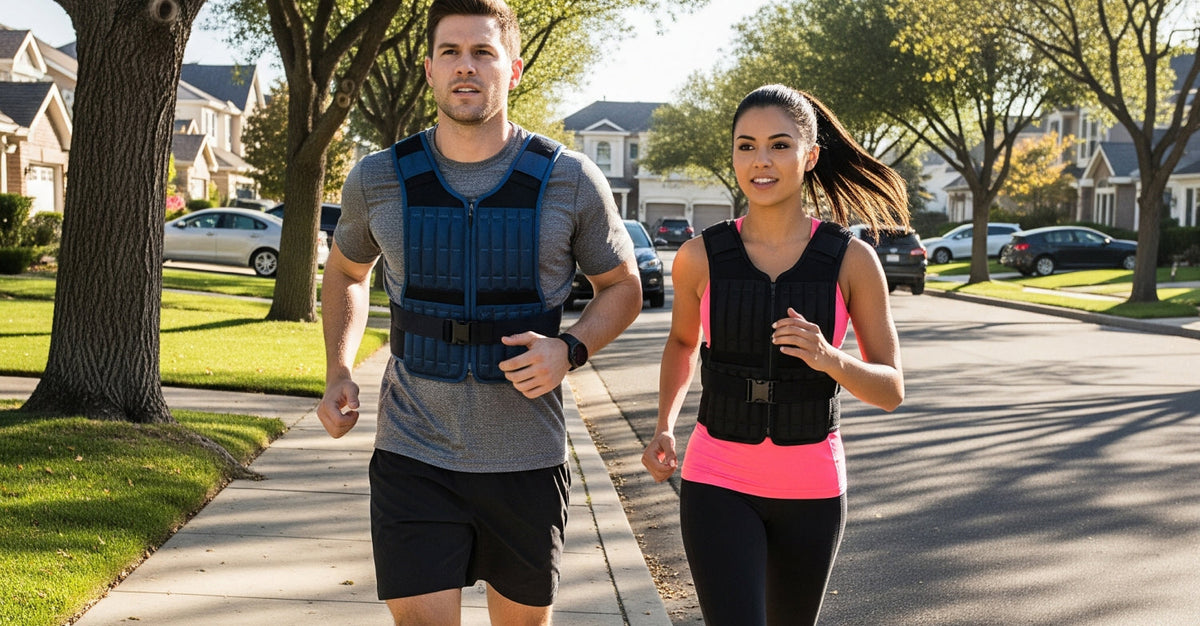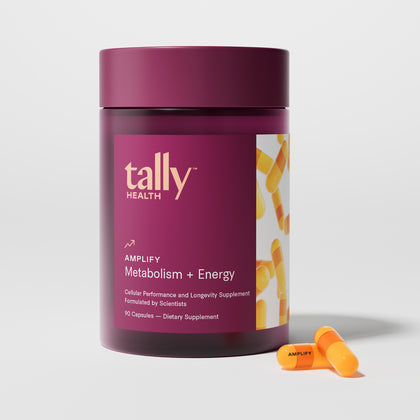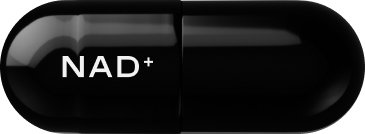

Weighted vests and rucking—carrying weight while walking—are no longer just military training tools. They're fast becoming staples of longevity-focused fitness. Why? Because they mimic the natural load-bearing challenges humans evolved to face daily, helping rebuild lost strength, balance, and bone density—especially as we age.
Studies show that adding modest external weight to daily movement increases muscle engagement, improves cardiovascular fitness, and may even slow biological aging markers by boosting mitochondrial function and metabolic efficiency.
Whether you’re simply walking, cleaning the house, or hiking with friends, integrating a weighted vest (10–15% of your body weight is a good place to start) is a science-backed way to make everyday life a workout—and help future-proof your body.
What Is Rucking?

Rucking is simple: walk with a weighted backpack or vest. Despite its simplicity, it activates muscles across your upper and lower body, engages your core, and places beneficial stress on your bones.
What are the Benefits of Rucking?
One study found that soldiers who rucked regularly had greater bone density, improved aerobic capacity, and less muscle loss than their non-rucking peers. This can build muscle, improve core strength, and can help cardiovascular health after consistent rucking sessions with a weighted rucksack. But it’s not just for elite athletes—rucking is accessible, scalable, and ideal for aging populations.
Key benefits include:
Improved balance and coordination
Increased bone mineral density
Boosted calorie burn without the joint strain of running
Strengthened posture and gait mechanics
Even 20–30 minutes of rucking a few times per week can lead to measurable fitness improvements and support healthy aging trajectories.
How to Start Rucking: A Beginner’s Guide to Safe and Effective Weighted Vest Walking

Want to get started with rucking? Here’s how to do it right—no military background required.
🏁 Step 1: Start with Bodyweight
If you’re new to walking or haven’t been active recently, begin by walking briskly for 20–30 minutes without added weight, 3–5 times per week. Once bodyweight exercises feel easy, move on to the next step — a strength training routine.
🎒 Step 2: Add Extra Weight Gradually
Start with 5–10% of your bodyweight in a weighted vest or backpack (ex: 10–15 lbs for a 150-lb person). Too much too soon can increase your risk of injury, especially to the knees or low back.
Pro tip: Use a ruck backpack of an appropriate weight with hip straps for better weight distribution to help protect your lower back.
⏱️ Step 3: Build Time and Distance
Begin with 20 minutes of rucking and add 5–10 minutes each week until you reach 45–60 minutes per session. You can also alternate walking with and without weight.
🧠 Step 4: Pay Attention to Posture
Keep your spine upright, core engaged, and shoulders back. Slouching with weight can strain your back and reduce the benefits.
⚡ Bonus: Turn It Into a Functional Fitness Habit
Use rucking as your commute, walk your dog with a vest, or grab groceries on foot. You’ll be building functional strength without having to schedule a workout.
Rucking not only boosts physical strength—it may also improve mood and reduce symptoms of anxiety, similar to other forms of aerobic exercise.
How to Choose the Best Weighted Vest for Your Body and Goals

A weighted vest can turn your everyday activities into a low-impact strength workout—but not all vests are created equal. Here’s what to look for to make sure your vest is effective, comfortable, and safe for long-term use.
✅ Look for Adjustable Design and Weight
Start light—ideally with 5–10% of your body weight—and work your way up with added weight plates or ruck plates. A vest with removable weights gives you the flexibility to gradually increase your carrying weight as your strength improves.
For example, a 150-lb person might start with a 10–15 lb vest and gradually work up to 20–25 lbs over a few months.
✅ Prioritize Fit and Balance
Choose a vest that distributes weight evenly across your torso. An evenly distributed vest will minimize joint strain and help preserve good posture. Look for designs that:
Sit high on the torso to avoid hip or lower back compression
Have padded shoulder straps for comfort
Include side or front fasteners to prevent bouncing
✅ Consider Activity Type
For walking and rucking , a snug fit with adjustable side straps is key.
For housework or chores , a low-profile vest that doesn’t restrict movement works best.
For higher-impact activities , look for vests with reinforced stitching and secure closures.
✅ Don’t Forget the Material
Breathable, sweat-wicking materials help prevent overheating and skin irritation—especially important if you’re wearing the vest under clothing or for extended periods.
⚠️ What to Avoid
Vests that are overly bulky or hang too low on the body
Fixed-weight vests (unless you're certain of the right weight)
Options without chest or waist stabilizers, which can cause uneven loading or too much weight on your back
A properly chosen vest becomes part of your body’s movement. A poorly chosen one becomes a liability.
Science-Backed Tips to Increase Your Daily Strength Training

Here are six science-backed ways to increase your strength starting today:
Use a weighted vest for daily walks
Consistent use of a weighted vest adds resistance to a functional movement, increasing load on bones and muscles.
Practice eccentric movement (slow lowering)
Controlled lowering or lengthening of a muscle during an exercise has been shown to activate more muscle fibers and reduce injury risk.
Include stair climbing in your fitness routine
Adding stairs to daily exercise improves lower-body strength and VO₂ max more efficiently than flat walking.
Do grip strength exercises
Strong grip predicts longer lifespan, improved healthspan, and reduced frailty.
Try body weight compound moves (like squats and push-ups)
These engage multiple muscle groups and are easy to modify.
Fuel strength gains with muscle-supportive nutrients
Muscle-supportive nutrients such as protein and creatine may help maintain lean mass during aging. It is important to speak to a healthcare provider to understand which nutritional supplements may be right for you.
Support Strength From Within: Amplify by Tally Health

Amplify by Tally Health is designed to complement your physical efforts by supporting strength, muscle recovery, and metabolic performance from the inside out.
🔬 Key ingredients include:
Glycine – A key amino acid that supports muscle protein synthesis, sleep, and mitochondrial health
Berberine - Assists in balancing blood sugar and supporting blood sugar metabolism
Coenzyme Q10 - Helps combat fatigue while making mitochondria more efficient
Whether you're carrying groceries in a vest or hiking your favorite trail, Amplify helps you build and sustain strength at the cellular level.
What is rucking?
Rucking is simple: walk with a weighted backpack or vest. Despite its simplicity, it activates muscles across your upper and lower body, engages your core, and places beneficial stress on your bones.
What are the benefits of rucking?
Rucking can build muscle, improve core strength, support cardiovascular health, increase bone mineral density, improve balance and coordination, boost calorie burn without joint strain, and strengthen posture and gait mechanics.
How much weight should I use in a weighted vest?
Start with 5–10% of your body weight in a weighted vest or backpack (for example, 10–15 lbs for a 150-lb person). You can gradually increase as your strength improves.
Recommended Supplements
Citations
Kelleher et al. Weighted Vest Use during Dietary Weight Loss on Bone Health in Older Adults with Obesity. J Osteoporos Phys Act 2017.
Normandin et al. Feasibility of Weighted Vest Use during a Dietary Weight Loss Intervention and Effects on Body Composition and Physical Function in Older Adults. J Frailty Aging 2018.
Beavers et al. Weighted Vest Use or Resistance Exercise to Offset Weight Loss–Associated Bone Loss in Older Adults: A Randomized Clinical Trial. JAMA Netw Open 2025.
Mierzwicki. Weighted Vest Training in Community-Dwelling Older Adults: A Randomized, Controlled Pilot Study. Physical Activity and Health 2019.
.Miller et al. Incorporating Nutrition, Vests, Education, and Strength Training (INVEST) in Bone Health: Trial Design and Methods. Contemp Clin Trials 2021.
Greendale et al. A randomized trial of weighted vest use in ambulatory older adults: strength, performance, and quality of life outcomes. J Am Geriatr Soc 2000.
NY Post. What is ‘rucking’? Low-impact exercise trend has a wild military link. 2024.
VeryWell Health. Rucking full-body workout benefits–start safely. 2024
People.com. Weighted vest bone health benefits & risks. 2025.
Business Insider. Trainer longevity rucking regimen for seniors. 2024
Allure. Weighted vest trend & bone/muscle preservation in menopause. 2025.











